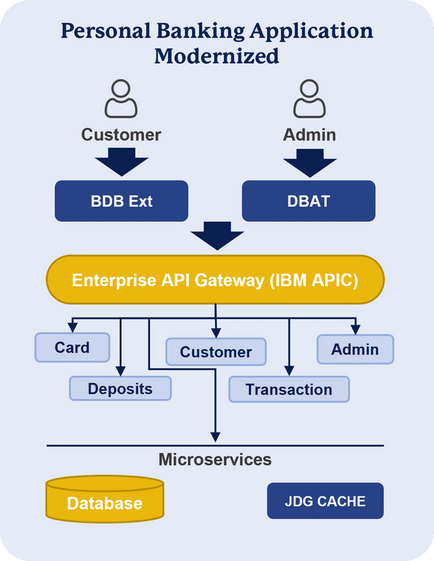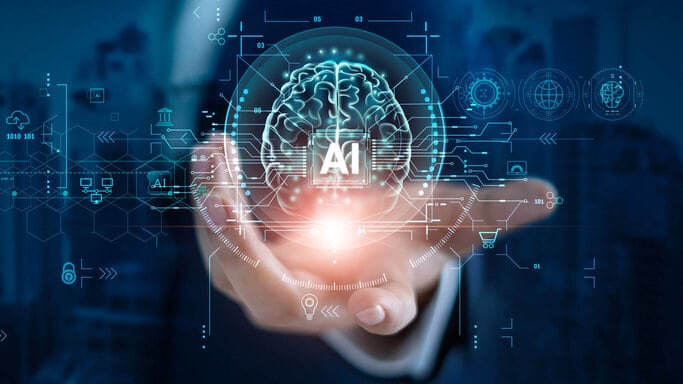

Client
Global health coaching and certification organization
Goal
To develop a responsive website while migrating existing blogs for improved visibility, user experience, and revenue streams
Tools and Technologies
ReactJS, Strapi, Azure API Management, Docker, Kubernetes, AWS CDN
Business Challenge
The client had a website that was static and non-responsive. It had developed extensive and content-rich blogs, but these had been published using an old CMS, Drupal, which severely impacted their SEO and SEM rankings, and reduced reach.
The goal was to redevelop the website with a new CMS that could integrate with multiple platforms to distribute content across various digital channels. Another objective was to leverage the existing content bank without requiring major rework during migration to the new system.

Solution
- Redeveloped a React-based responsive website with new design and positive Lighthouse reports
- Created custom scripts to migrate content from Drupal to Strapi, while retaining or standardizing source formatting
- Developed a headless CMS as a single source to publish content across digital channels
- Integrated tools for monetization

Outcomes
- Greatly improved user experience with a 17% decrease in website bounce rate and 20% rise in average session duration
- Improved website performance to deliver high Lighthouse scores, 30% faster page loading and 10% increase in traffic
- Streamlined content management with headless CMS, resulting in 20% reduction in time taken for content creation and 25% increase in content updates per month
- Integrated new monetization tools to deliver 15% increase in monthly ad revenue and 10% increase in revenue from affiliate marketing programs

Our experts can help you find the right solutions to meet your needs.
Workflow orchestration for complex insurance ops



Client
A leading mutual life insurance provider
Goal
Smooth workflow execution for case creation and management of complex insurance processes across legacy and modern systems
Tools and Technologies
iProcess, Java, Spring Boot, BW5, BW6, FTP, Database systems
Business Challenge
The client operated its platform with varied legacy and modern systems for managing diverse insurance operations. The system covered a wide range of complex processes with numerous interfaces and data exchanges.
The goal was to transform the system and streamline it to manage those varied processes and orchestrate seamless execution of workflows across multiple backend systems. The integration had to be executed smoothly to ensure a unified, efficient user experience, overcoming complexities.

Solution
- Developed the Simon Workflow Portal, a centralized entry point to start and manage business cases and workflows
- Enabled transaction of insurance plans through various lifecycle stages with BPM
- Ensured accurate and timely processing with BPM
- Built an execution engine to trigger specific workflows
- Automated operations across systems for data consistency, and reduced manual effort
- Created a robust middleware layer to manage communication between systems, ensuring secure and reliable data flow

Outcomes
- Improved overall operational efficiency
- Reduced manual intervention and processing time with automated workflows
- Enabled seamless integration across multiple legacy and modern systems
- Ensured data integrity and process continuity
- Developed scalability and flexibility for easy updates and integration of new features or systems

Our experts can help you find the right solutions to meet your needs.
Integration of new and legacy insurance services



Client
A leading mutual life insurance provider
Goal
Ensure seamless integration of new services with legacy systems, offering enhanced access without disruption
Tools and Technologies
Java 11 & 17, Spring Boot, AWS, Jenkins, Apigee Gateway, Splunk Dashboards, Jira, Confluence, Microservices
Business Challenge
The client operated its platform using a legacy infrastructure, which had some limitations. It desired to introduce new services on a modern platform, without disrupting the existing legacy infrastructure or changing the current customer interface.
The goal was to create a compatible schema of responses from both platforms and to ensure that the integration did not affect overall service availability during and after the transition.

Solution
- Built an API façade layer to allow intelligent routing and appropriate directing of traffic between legacy and FINEOS services
- Enabled feature toggles for dynamic switching between legacy and FINEOS services
- Ensured a controlled rollout and rollback without code redeployment
- Implemented a backward-compatible schema design for consistent responses across systems
- Provided error handling and fallback mechanisms for graceful degradation
- Maintained continuity of service in case of failures in the new system

Outcomes
- Increased scalability and enabled support for higher loads
- Improved system uptime and delivered greater reliability
- Provided seamless user experience and minimal disruption
- Enhanced customer trust and satisfaction
- Allowed testing and deployment of features incrementally
- Ensured greater operational flexibility
- Upgraded monitoring and traceability for proactive issue detection and resolution
- Created strong foundations for future enhancements and service expansions

Our experts can help you find the right solutions to meet your needs.
Modern system for insurance data management



Client
A large NY-based life insurance and investment company
Goal
Create a secure, automated solution for data ingestion and a robust framework for distribution across channels
Tools and Technologies
Python, PySpark, AWS Glue/Redshift/Lambda/S3/Aurora, Stonebranch, Jira, Github
Business Challenge
The client used a legacy product data infrastructure (PACE) and other systems that provided neither fully-secure access nor enabled efficient quality checks. This affected system integration and data ingestion and distribution.
Workflows and checks were not adequately automated, and they did not offer a reusable framework to generate and deliver outbound data files aligned with business requirements.

Solution
- Created reusable and scalable ETL/ELT pipelines using Python and AWS services
- Integrated Stonebranch for orchestration and automated job scheduling, with monitoring mechanisms and alerts
- Tuned Redshift queries and optimized data ingestion processes to reduce latency and improve throughput
- Defined data specifications and output formats as per business needs
- Built a configurable pipeline to create dynamic CSV/Excel files from Redshift views
- Automated file delivery via email/SFTP monitored and orchestrated by Stonebranch

Outcomes
- Improved data distribution and a reusable framework for ingestion and distribution of data across existing and new products
- Streamlined operations and improved data accessibility
- Enhanced performance and scalability
- Ensured better data quality and governance with automation and structured reusability

Our experts can help you find the right solutions to meet your needs.
Modern insurance product data services platform



Client
A large NY-based life insurance and investment services provider
Goal
Create a unified, scalable architecture for secure, standardized sharing of data with downstream services
Tools and Technologies
Java 21, Spring Boot, AWS, Jenkins, Stonebranch, Jira, Microservices, Redshift, Aurora, DynamoDB, Angular, JS, MYSQL, EKS, SQS
Business Challenge
The client used a product data mart that lacked a secure, standardized method to share data with downstream services. This affected data governance and consistency across applications. It also faced the risk of disrupting tightly integrated legacy data flows while shifting from a legacy PACE system that supports critical AEM microservices to a PDP mart.
It needed a new system that is scalable, and the modernization process had to be carried out with minimal disruption to existing systems.

Solution
Implemented a dual-solution strategy to modernize data access and delivery. Key elements included:
- Built a microservices-based platform and deployed on AWS
- Enabled secure, flexible API access to the product data mart using tagged identifiers
- Ensured a scalable design with minimal code changes for expansion
- Allowed existing AEM microservices to operate without changes during and post-transition

Outcomes
- Improved efficiency and security by enabling standardized, governed access to product and entity data
- Achieved faster delivery and reduced manual effort
- Ensured seamless integration while modernizing the backend
- Maintained front-end stability of AEM microservices

Our experts can help you find the right solutions to meet your needs.
Modern insurance platform for loan processing



Client
A large NY-based life insurance and investment company
Goal
Modernize product data management services to enhance loan processing and improve user experience
Tools and Technologies
Angular 15, .Net 4.8, .NET 8.0, AWS EC2, SQL Server, PostgreSQL, Stonebranch, SharePoint, IIS
Business Challenge
The client operated a critical legacy application for loan processing, which had significant operational inefficiencies and shortcomings in user experience. It hindered the speed and accuracy of loan disbursements, affecting both internal operations and customer satisfaction.
The goal was to modernize the platform with scalable solutions that could enable secure distribution of critical data and better governance, while integrating smoothly with downstream applications.

Solution
- Implemented a holistic modernization approach with a focus on system integration, functional enhancements, and UI transformation
- Streamlined deal creation and approval through a third-party system with robust verification and compliance features
- Enabled multi-loan support under a single deal
- Ensured consistency by introducing a standardized component library with reusable UI components
- Revamped the interface with intuitive design, responsive layouts, and improved user experience

Outcomes
- Enhanced efficiency, scalability, and user-centric loan operations
- Improved ROI through greater efficiency, better user experience, and agility
- Reduced verification effort by 30–55% and enabled focus on higher-value tasks
- Streamlined processes and minimized data duplication
- Ensured consistent design and efficient development
- Increased customer satisfaction, with a projected 50% rise in retention

Our experts can help you find the right solutions to meet your needs.

Modernizing Java & Spring Boot with iRenew
Learn how enterprises can modernize legacy Java and Spring Boot apps using a semi-automated approach that improves performance, reduces tech debt, and accelerates time-to-market.

Modernizing enterprise applications is a complex challenge. It often requires manual or semi-automated refactoring to assess the impact of upgrades, automation, and cloud migration. Key considerations include cross-platform compatibility, performance, security, scalability, and talent availability.
Many enterprise systems—especially those built on older versions of Java and frameworks like Spring Boot—are reaching end-of-life. Java 8 and Spring Boot 1.x/2.x, for example, no longer meet today’s security and performance demands, prompting organizations to consider modernization.
Iris iRenew offers a structured, semi-automated methodology to upgrade legacy Java applications. By combining open-source tools, refined processes, and deep migration expertise, iRenew drives 36–39% efficiency gains by automating key phases like discovery, refactoring, and testing.
Read our Perspective Paper for a detailed playbook on the modernization journey, including key phases, measurable benefits, and a real-world case study.
Contact
Our experts can help you find the right solutions to meet your needs.
Get in touchMove to Singularity platform benefits insurer



Client
Large NY-based life insurance & investment company
Goal
Modernize multiple legacy accounting systems to achieve operational efficiency, scalability and improved data analytics
Tools and Technologies
Python, Oracle, SQL Server, AWS Server, Jira, Stonebranch
Business Challenge
The insurer sought a comprehensive cloud-based solution using modern infrastructure and automation to address key challenges. The Singularity platform was selected to integrate investment data from multiple accounting systems, including SS&C CAMRA, Blackrock, IDCFX, Mackay, and Marked Price, into a unified solution. The project aimed to modernize the insurer’s legacy Debt & Derivatives system, which was limited in functionality, lacked scalability, and hindered business growth due to its outdated, on-premises infrastructure.

Solution
- Seamless integration of data into and out of the Singularity platform enabled streamlined operations
- Stonebranch Universal Automation Controller on AWS was leveraged to automate and schedule data extracts, ensuring timely and reliable data availability
- Robust data integrity checks were embedded throughout the pipeline to maintain high-quality outputs
- Tableau was integrated to deliver interactive dashboards, enabling data-driven decision-making across business functions

Outcomes
- The solution delivered greater scalability, system reliability, and data accuracy
- The streamlined data ecosystem significantly enhanced overall user experience
- Unified data and interactive Tableau dashboards established a single source of truth, supporting more informed business decision-making
- The modernized platform enabled the generation of complex business-critical reports that were not possible with the legacy system

Our experts can help you find the right solutions to meet your needs.
Legacy System Modernization for Cloud



Client
Large NY-based life insurance and investment company
Goal
Modernize technology systems in commercial real estate functions to reduce bottlenecks, response times and vulnerabilities
Tools and Technologies
.NET 8, Angular 17+, Docker, Kubernetes, GitHub, AWS
Business Challenge
The insurer’s commercial real estate mortgage unit required upgrades to the technology systems supporting its loan processing and cash management capabilities. Reliance on .NET Framework 4.8 and Angular 9 posed significant limitations, including restricted agility, difficulty adopting microservices, and challenges attracting top engineering talent. The existing monolithic, non-cloud-native architecture led to performance bottlenecks and slow response times. Outdated protocols created security vulnerabilities, while limited DevOps integration and complex debugging made cloud migration costly and inefficient.

Solution
- Migrated the technology stack to .NET 8 and Angular 17+ for better cross-platform compatibility and long-term performance
- Adopted Docker and Kubernetes to enable scalable, cloud-native deployments on AWS
- Implemented CI/CD automation using GitHub Actions for faster and more secure release cycles
- Refactored legacy application into a modular monolith and microservices for agility and maintainability

Outcomes
- Improved application performance and responsiveness delivered faster, smoother user experiences
- Boosted developer productivity and team collaboration and streamlined testing and onboarding
- Strengthened security and compliance with up-to-date platforms and better integration with security tools
- Enabled scalable, reliable, simplified deployments using containerization and orchestration
- Reduced long-term maintenance effort and costs through clean, modular code and better monitoring

Our experts can help you find the right solutions to meet your needs.
Eagle Access Data Platform Transforms Accounting



Client
Large NY-based life insurance and investment company
Goal
Consolidate multiple accounting systems into a centralized, reliable data warehouse to improve reporting and decision-making
Tools and Technologies
BNY Eagle Access, Python, Oracle, AWS EC2 and S3, SQL Server, Jira, Stonebranch
Business Challenge
The insurer faced growing inefficiencies due to siloed accounting systems that lacked integration, consistency, and scalability. Reporting processes were time-consuming, error-prone, and lacked real-time visibility—hindering timely business and investment decisions. A centralized solution was needed to ingest and unify data from disparate systems like SAP GL, Singularity, and Loan Management into a single, trusted platform to support strategic financial insights and reduce operational complexity.

Solution
- Built a centralized accounting data warehouse using the Eagle Access secure private cloud environment
- Ingested and standardized data from SAP GL, Singularity, and Loan Management systems
- Used AWS EC2, S3, and Stonebranch Universal Automation Controller for cloud infrastructure and job orchestration
- Enabled real-time reporting via Tableau integration and migration of legacy dashboards
- Improved data accuracy and consistency through robust validation and automation

Outcomes
- Created a unified source of truth for all accounting data
- Enabled faster, more accurate reporting and analytics, improving business and investment decision-making
- Reduced data silos and improved accessibility across systems
- Minimized infrastructure complexity and operational risk with secure private cloud hosting
- Enhanced efficiency through automated data processing and orchestration

Our experts can help you find the right solutions to meet your needs.
Industries
Company

